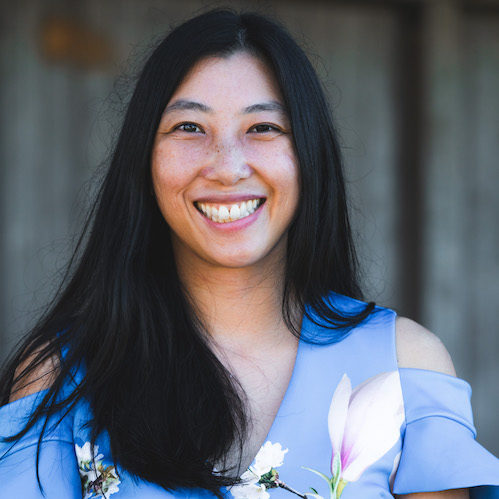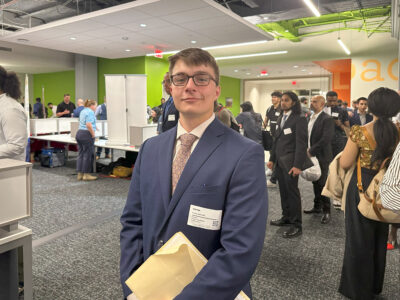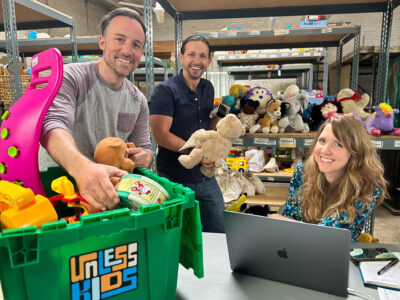Founded in Boulder, Colorado, Techstars started as an experiment to see if 100 mentors could help 10 startups scale.
The experiment worked so well that Techstars was approached by other cities and global corporations such as Disney and Microsoft to launch similar programs. It has since invested in over 3,000 companies and has accelerators around the world. The areas around DC and Baltimore are becoming key hubs for Techstars and form the bases of at least four accelerators: Future of Longevity and Techstars Washington DC Powered by J.P. Morgan in DC, and Techstars Equitech and STANLEY + Techstars in Baltimore. Keith Camhi and Adam Phillips lead Techstars’ accelerators in DC and Baltimore, respectively, and they are excited by the potential of the region to support founders.
Here are some of the highlights that Camhi and Phillips discussed during a recent appearance on “The Monthly Blend,” a podcast spotlighting the DMV tech scene that is cohosted by Opus8 CEO Tien Wong and NEXT powered by Shulman Rogers Chair Anthony Millin:
Foci, lineage and hurdles
Before joining Techstars, Camhi was a seasoned founder and angel investor. He cofounded the first venture-funded fitness company in the 90s and raised $50 million in multiple rounds. He bootstrapped his second startup, which focused on creating high-tech gyms in which kids could play and learn. He now leads Techstars’ two DC-based accelerators, whose structure he explained to Wong and Millin.
“Techstars focuses on a node of 10-12 companies with a local team on the ground,” said Camhi. “The Future of Longevity is national and we are able to support founders in a very hands-on way. We have both the local firepower and the global network of investors, alumni, mentors, corporate partners.”
In terms of what companies make sense for Techstars accelerators, Camhi had a fantastical description.
“If you’re going to pick a mythical creature right now, it is not going to be a unicorn with butterflies. It will be a dragon who is resistant and can slug it out for 10 years,” said Camhi.
To support these future dragons, Techstars helps founders “slow down to speed up.” In the first month of the accelerator, founders work on their vision and strategy for execution against upcoming milestones, such as fundraising and pilots. This is followed by Mentor Madness, which was described as speed dating with mentors; the goal is to get lots of feedback on the strategy, such as whether the customer segment makes sense. Camhi learned this from experience: He once spent a year chasing a customer that did not have the budget to spend on his product. Between three and six lead mentors will emerge from Mentor Madness; these mentors then constitute the advisory board for the startup during the accelerator, as well as help founders execute against key performance indicators and prepare for a demo day.
Despite the assets that DC offers an accelerator like Future of Longevity — including such influential organizations as the National Institute of Aging and AARP — Camhi noted a key weakness in the overall ecosystem: keeping promising entrepreneurs around.
“DC’s weakness is in retaining talent,” said Camhi. “Founders leave when they can’t find funding here.”
Further up the parkway in Baltimore, Phillips joined Techstars in 2022 and oversees the Equitech accelerator (STANLEY + Techstars has another managing director, Laila Partridge). Together with UpSurge Baltimore, Techstars is working to make Baltimore the country’s first equitech city. Phillips expressed excitement about working with founders to create a city of innovation that benefits everyone — something he and his partners think can be enabled by the Smalltimore dynamic.
“Baltimore is a very big small town, everyone knows each other, everyone is well-connected,” said Phillips.
Learn more by checking out the podcast below:
Before you go...
Please consider supporting Technical.ly to keep our independent journalism strong. Unlike most business-focused media outlets, we don’t have a paywall. Instead, we count on your personal and organizational support.
3 ways to support our work:- Contribute to the Journalism Fund. Charitable giving ensures our information remains free and accessible for residents to discover workforce programs and entrepreneurship pathways. This includes philanthropic grants and individual tax-deductible donations from readers like you.
- Use our Preferred Partners. Our directory of vetted providers offers high-quality recommendations for services our readers need, and each referral supports our journalism.
- Use our services. If you need entrepreneurs and tech leaders to buy your services, are seeking technologists to hire or want more professionals to know about your ecosystem, Technical.ly has the biggest and most engaged audience in the mid-Atlantic. We help companies tell their stories and answer big questions to meet and serve our community.
Join our growing Slack community
Join 5,000 tech professionals and entrepreneurs in our community Slack today!






